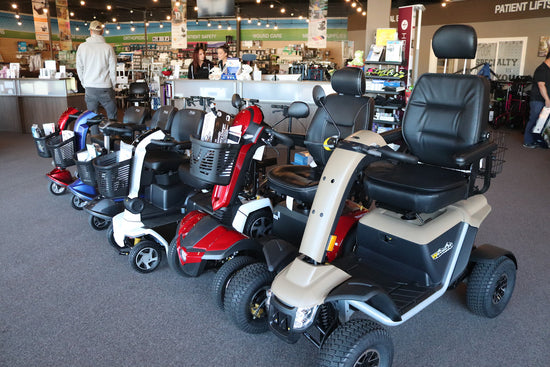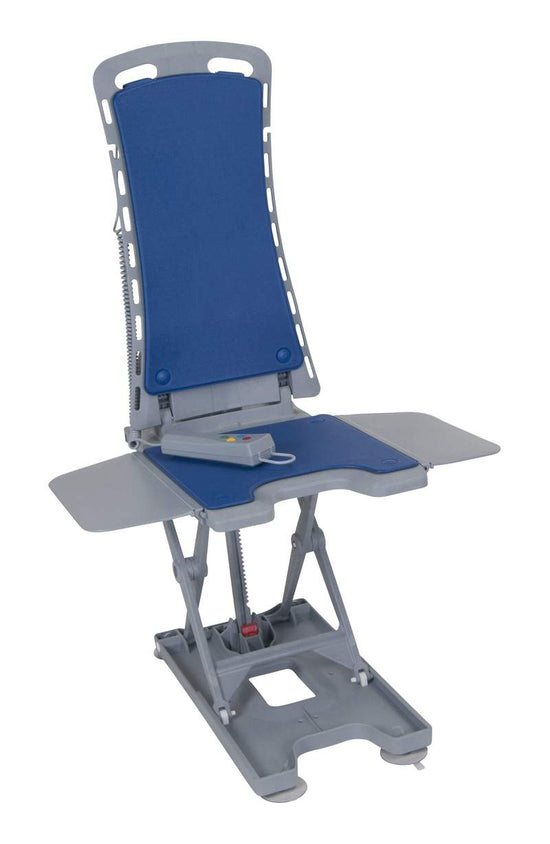Navigating the world with a walker for the first time can be both empowering and intimidating. First-time users often face an array of challenges, from mastering the mechanics of the device to adjusting mentally and emotionally to this new mode of mobility. Understanding these common obstacles is crucial in making the transition smoother and more successful. This blog aims to provide practical insights and strategies to help first-time walker users overcome these challenges, ensuring greater independence and confidence in their daily activities.
Understanding Different Types of Walkers
Selecting the right walker is crucial for ensuring safety, comfort, and mobility. There are several types of walkers available, each designed to meet different needs and preferences. Here’s a detailed look at the primary categories:
Standard Walkers
- Description: Feature four non-wheeled legs that provide maximum stability.
- Best for: Individuals who need substantial support and balance assistance.
- Pros: Highly stable and supportive, ideal for indoor use on even surfaces.
- Cons: Can be cumbersome and slow-moving, requiring lifting with each step.
Two-Wheeled Walkers
- Description: Equipped with wheels on the front two legs and static back legs.
- Best for: Individuals needing moderate support but requiring easier maneuverability.
- Pros: Easier to push than standard walkers, suitable for both indoor and outdoor use.
- Cons: Less stable than standard walkers, not ideal for uneven terrain.
Four-Wheeled Walkers (Rollators)
- Description: Include four wheels, hand brakes, and often a seat for resting.
- Best for: Individuals with sufficient balance who want greater mobility and convenience.
- Pros: Highly mobile and versatile, often come with additional features like storage pouches.
- Cons: Less stable than two-wheeled walkers, can be difficult to control on slopes.
Knee Walkers
- Description: Designed for individuals recovering from foot or ankle injuries, featuring a padded knee rest.
- Best for: Short-term use during recovery from lower leg injuries.
- Pros: Allows for hands-free movement while providing support.
- Cons: Not suitable for individuals with balance issues or long-term mobility needs.
Understanding these options will help you choose the appropriate walker, aligning with your specific mobility requirements and lifestyle.
Initial Adjustments: Getting Started with Your Walker
Getting started with your walker involves a few key adjustments to ensure safety and comfort. Here’s a step-by-step guide to help you make the initial transition smoothly:
Setting Up Your Walker
- Adjust the Height: Ensure the walker’s handles are at wrist level when your arms are relaxed by your sides. This helps maintain proper posture and reduces strain on your back and shoulders.
- Secure All Parts: Check that all components, including wheels, brakes, and locks, are securely fastened and functional. Refer to the manufacturer’s manual for specific instructions.
Basic Walking Techniques
- Proper Posture: Stand upright with your walker slightly ahead of you. Avoid leaning too far forward or backward, which can affect your balance.
- Step Sequence: Move the walker forward first, then step into it with your weaker leg followed by your stronger leg. This sequence ensures stability and minimizes the risk of falls.
- Pacing: Start with slow, deliberate steps. Gradually increase your pace as you become more comfortable and confident.
Safety Tips
- Clear Pathways: Ensure your walking area is free of obstacles such as rugs, cords, and clutter to prevent tripping.
- Use Brakes: If your walker has brakes, practice using them in different scenarios, such as stopping and turning.
- Avoid Slippery Surfaces: Be cautious on wet or polished floors. Consider using non-slip mats or shoes with good traction.
Practice Makes Perfect
- Short Walks: Begin with short walks around your home to get accustomed to the walker. Gradually extend your distance as you build strength and confidence.
- Seek Assistance: If possible, have someone assist you during the initial phase to provide support and encouragement.
By following these guidelines, you’ll develop the skills and confidence needed to use your walker effectively in daily life.
Common Challenges and How to Overcome Them
While using a walker can significantly improve mobility, first-time users often face several common challenges. Understanding and addressing these issues can enhance your experience and safety.
Balancing and Coordination
- Challenge: Maintaining balance and coordination while using the walker.
- Solution: Practice walking with the walker in short, controlled settings. Focus on maintaining an upright posture and taking slow, deliberate steps. Physical therapy can also help improve balance and coordination.
Physical Discomfort and Fatigue
- Challenge: Experiencing discomfort or fatigue in the arms, shoulders, or back.
- Solution: Ensure your walker is adjusted to the correct height to prevent strain. Take frequent breaks to rest and avoid overexerting yourself. Incorporate gentle exercises to strengthen your upper body muscles.
Navigating Different Surfaces
- Challenge: Difficulty maneuvering on various surfaces such as carpets, uneven ground, or slopes.
- Solution: Start by practicing on flat, smooth surfaces before gradually moving to more challenging terrains. Use the walker’s brakes when navigating slopes to control speed. Consider walkers with larger wheels for better stability on uneven surfaces.
Managing Obstructions
- Challenge: Dealing with obstacles like door thresholds, rugs, and crowded spaces.
- Solution: Clear your walking path of any potential hazards. Use ramps where available to navigate door thresholds smoothly. In crowded spaces, take your time and communicate with others to ensure a safe passage.
Psychological Adjustments
- Challenge: Overcoming feelings of self-consciousness or frustration.
- Solution: Remember that using a walker is a positive step toward maintaining independence and mobility. Engage in support groups or talk to others who use walkers to share experiences and gain encouragement.
By recognizing these common challenges and employing these practical solutions, you can navigate your walker use with greater confidence and ease, ultimately leading to a more independent and fulfilling lifestyle.
Daily Life Integration: Making the Most of Your Walker
Integrating a walker into your daily life can significantly enhance your mobility and independence. Here are some practical tips to help you maximize the benefits of your walker:
Navigating Different Environments
- Indoor Spaces: Ensure your home is walker-friendly by removing tripping hazards such as loose rugs, cords, and clutter. Use furniture arrangements that allow for easy movement and access.
- Outdoor Areas: Choose routes with smooth, even surfaces. Be cautious on uneven ground, and use walkers with larger wheels for better stability. Practice using curb ramps and avoid steep inclines where possible.
Incorporating the Walker into Daily Routines
- Morning Routine: Position your walker close to your bed for easy access when you wake up. Use it to navigate to the bathroom and kitchen safely.
- Shopping and Errands: Opt for stores and locations with accessible pathways and ramps. Many walkers feature built-in storage compartments or baskets, making it easier to carry items while keeping both hands on the walker for support.
- Exercise and Leisure: Engage in light physical activities that accommodate your walker use, such as walking in the park or participating in low-impact exercise classes. This helps maintain fitness and improves your confidence in using the walker.
Social and Recreational Activities
- Social Events: When attending gatherings, inform hosts about your mobility needs in advance. Choose seating arrangements that provide sufficient space for your walker.
- Recreational Outings: Plan outings to accessible venues like museums, theaters, or parks that offer walker-friendly amenities.
Safety Precautions
- Emergency Preparedness: Keep a phone within reach at all times in case of emergencies. Familiarize yourself with the layout of new environments to identify potential hazards.
- Regular Checks: Perform routine maintenance on your walker to ensure it remains in good working condition. Check for wear and tear, and address any issues promptly.
By thoughtfully integrating your walker into daily activities and routines, you can maintain an active and independent lifestyle, enjoying the freedom and support that your walker provides.
Featured Walkers from Our Collection
When selecting a walker, it's important to find one that meets your specific needs and preferences. Here are some top-rated walkers from our collection that offer diverse features and benefits to accommodate various user requirements.
Dual Pad Steerable Knee Walker Knee Scooter with Basket

- Description: This versatile knee walker is ideal for individuals recovering from foot or ankle injuries. It features a comfortable dual pad knee rest and a steerable front axle for easy maneuverability.
- Key Features:
- Dual knee pads for enhanced comfort
- Steerable front wheels for better control
- Convenient basket for carrying personal items
- Best For: Short-term use during recovery periods, allowing for hands-free mobility while keeping the injured leg elevated.
Heavy Duty Bariatric Walker

- Description: Designed to provide robust support, this bariatric walker accommodates higher weight capacities without compromising stability and comfort.
- Key Features:
- Reinforced frame for extra durability
- Adjustable height to suit individual needs
- Wide base for added stability
- Best For: Individuals requiring higher weight support and maximum stability, particularly for daily indoor use.
Klip Lightweight Posterior Walker W/ 8 Inch Wheels And Seat For Kids Teens KP538

- Description: This lightweight posterior walker is specifically designed for children and teens. It features large 8-inch wheels for smooth movement and an integrated seat for resting.
- Key Features:
- Lightweight frame for easy maneuvering
- 8-inch wheels for improved mobility on various surfaces
- Built-in seat for convenient resting
- Best For: Active children and teenagers who need a supportive yet mobile walker for both indoor and outdoor activities.
Klip Lightweight Posterior Walker For Kids And Teens KP420R

- Description: Another excellent option for younger users, this posterior walker offers a lightweight design and effective support for children and teens.
- Key Features:
- Lightweight construction for ease of use
- Adjustable height to grow with the user
- Compact design for easy storage and transport
- Best For: Young users who require reliable, everyday mobility support and seek a walker that can adapt as they grow.
These featured walkers from our collection are designed to address a wide range of mobility needs, offering solutions for everything from injury recovery to long-term support for both children and adults. Discover these models and more on our website to find the perfect fit for your lifestyle at Everything Medical.




